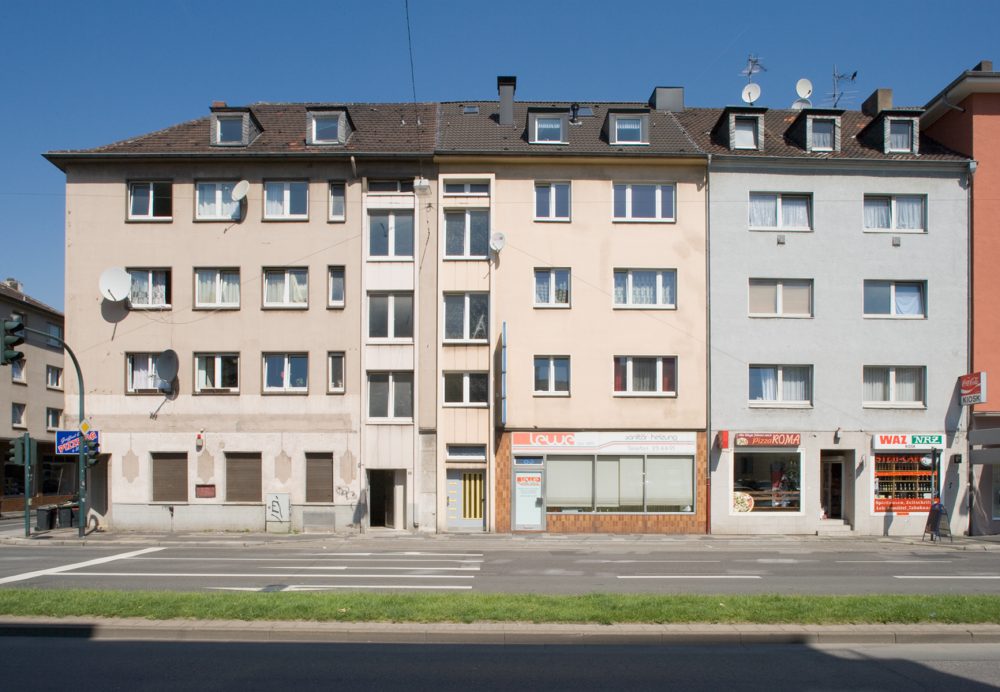Grey Architecture – defined in this thesis for the first time – stands for the everyday architecture that was produced in large quantities from 1945 to the beginning of the 1960s in western Germany, following the destruction wreaked by World War II. The primary goal of this thesis was to develop an architectural definition of Grey Architecture by means of an analysis of its historical as well as its structural properties. For this, a typical sample is examined on several scales: Viehhofer Street Number 28, a building in the city centre of Essen, together with 22 neighbouring buildings located in two blocks.
Part I examines the specific conditions and guiding principles out of which Grey Architecture developed. It starts by describing the existing building culture, the roots of which date back to 19th century Germany’s period of industrialization. This is followed by an investigation of the specific implications of the World War II bombings for the perception of the urban environment. Subsequently, the client’s requirement profiles and expectations are discussed, which were mainly determined by intense financial restrictions coupled with acute time pressure. Architects who were contracted by these clients followed a specific architectural approach which was characterized by an education primarily oriented towards craftsmanship and pragmatism. In addition, they were influenced by the often only rudimentary control that city authorities were able to exert over the redevelopment of the city structure. The last two chapters deal with the specific growth patterns of this Grey Architecture as a result of these initial conditions and how this style aged from the end of the 1960s onwards.
Part II gives a specific architectural analysis of Grey Architecture with regard to its urban properties, its vocabulary and its composition. For each of these factors, comparisons are made with the contemporary architecture of the avant-garde. It emerges that a layering – as opposed to a synthetically composed – combination of citations and contextual influences is decisive for the specific appearance of Grey Architecture. Such layering, manifested in a multitude of variations, can be demonstrated in all the examples that are analyzed.
Based on the findings of the first two parts, Part III contextualizes Grey Architecture in several ways: in terms of systematization, it is claimed that, because it is neither a type nor a style, Grey Architecture can be identified as a mode – a specific way of producing architecture. Thus, its emergence was part of a strong differentiation of architectural possibilities in the course of modernization. This leads to the finding that Grey Architecture can be regarded as an integral part of modernity; an assumption which is further backed by the fact that this architecture actually met most modernist demands and is based on modern principles. The concluding chapter further elaborates this fact by comparing Grey Architecture to its predecessors, its prototypes and its successors.
PhD by Benedikt Boucsein at the ETH Zurich, Examinator Prof. Dr. Andreas Tönnesmann, Co-examinator Miroslav Sik.




